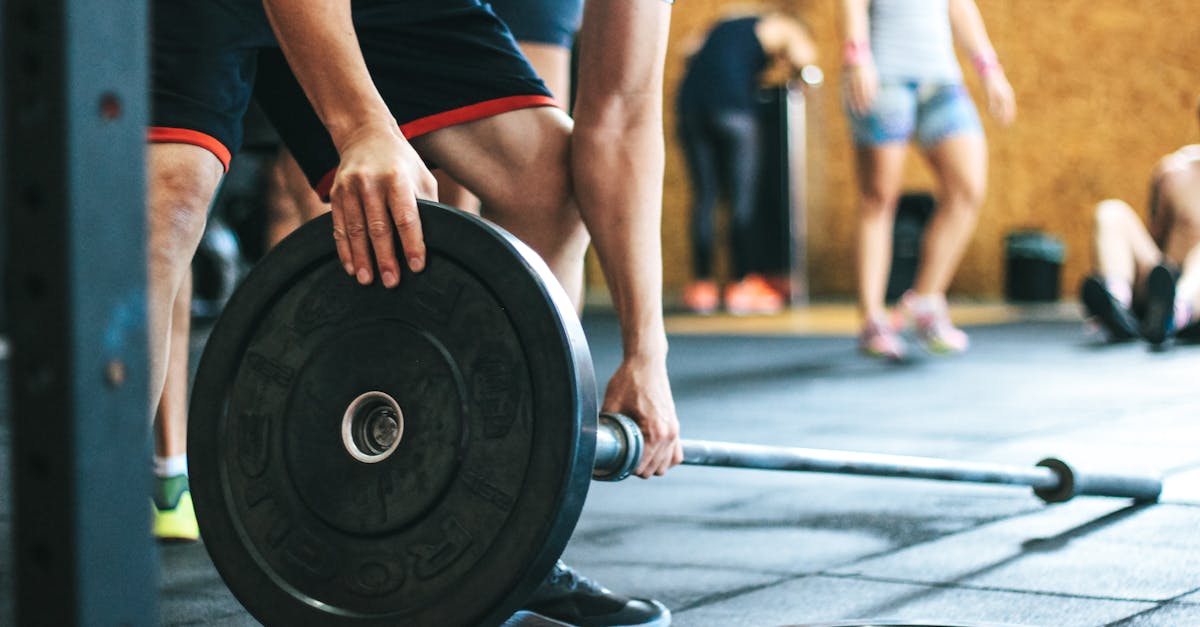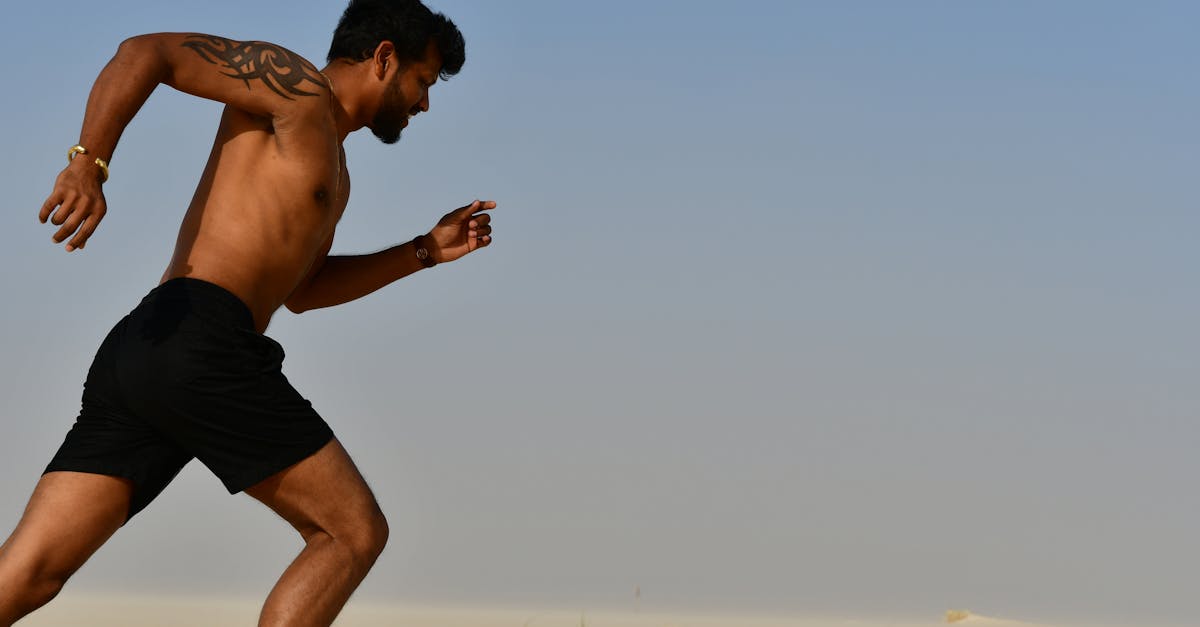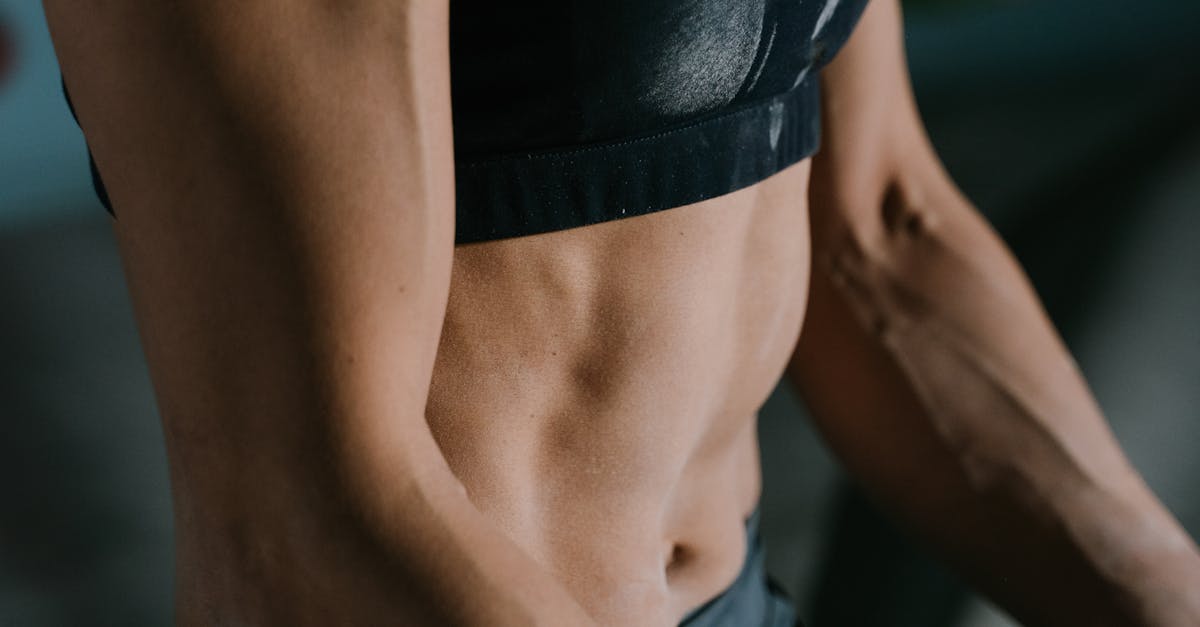Psoas Pain: Effective Stretches for Relief
Unlocking Relief: Comprehensive Guide to Psoas Pain Relief Through Effective Stretches

Psoas pain is a common issue affecting many individuals. It refers to discomfort or pain experienced in the psoas muscle, a deep-seated muscle located in the lower back that plays a vital role in movement and posture. This pain can limit mobility, cause discomfort, and impact daily activities. Fortunately, effective stretches and strategies can provide relief and improve the flexibility of the psoas muscle. This article will delve into the causes, symptoms, and importance of psoas muscle flexibility while presenting the top five stretches that effectively target psoas pain. Additionally, it will offer tips for incorporating these stretches into your routine and provide resources for further support and management of psoas pain.
The psoas muscle is often called the
1. Causes and Symptoms of Psoas Pain
Psoas pain can arise from various causes, including:
-
Prolonged sitting: Remaining seated for extended periods, such as during work or commuting, can lead to tightness and shortening of the psoas muscle. This can result in pain and discomfort when attempting to move or stretch the muscle.
-
Muscle overuse: Engaging in activities that repeatedly flex the hip joint, like running, cycling, or playing sports, can strain the psoas muscle, especially if proper warm-up and stretching are not performed.
-
Underlying conditions: In some cases, psoas pain may be caused by an underlying condition affecting the spine or hip joint. Spinal stenosis, disc herniation, or osteoarthritis can irritate or compress the psoas muscle, leading to pain and inflammation.
The symptoms of psoas pain can vary depending on the severity of the condition. Common symptoms include:
-
Pain in the lower back: The pain is often felt in the lumbar region, or lower back, and may radiate to the buttocks or groin area.
-
Hip pain: Pain and stiffness in the hip joint can occur, particularly when flexing or rotating the hip.
-
Reduced flexibility: Tightness and inflexibility in the psoas muscle can limit the range of motion in the hip and lower back.
-
Muscle spasms: The psoas muscle may go into spasms, causing sudden and involuntary contractions that can be painful.
It’s important to note that psoas pain can mimic other conditions, such as sciatica or hip joint problems. Seeking professional medical advice is recommended for an accurate diagnosis and appropriate treatment plan.
2. The Importance of Psoas Muscle Flexibility

Maintaining flexibility in the psoas muscle is crucial for overall physical well-being. Here’s why:
-
Posture: The psoas muscle plays a significant role in supporting the spine and pelvis, contributing to good posture. Tightness in this muscle can lead to an anterior pelvic tilt, where the pelvis rotates forward, causing an exaggerated arch in the lower back and potentially leading to back pain and discomfort.
-
Balance: The psoas muscle, along with other hip flexors, is essential for maintaining balance and stability during standing, walking, and other movements. Adequate flexibility in this muscle allows for proper weight distribution and coordination, reducing the risk of falls and injuries.
-
Mobility: Flexibility in the psoas muscle is vital for maintaining a full range of motion in the hip joint. It enables activities such as walking, running, and climbing stairs without pain or restriction. Tightness in the psoas muscle can limit hip flexion, making everyday movements challenging and uncomfortable.
Improving psoas muscle flexibility can bring numerous benefits. Regular stretching can help:
- Reduce lower back pain and discomfort
- Improve posture and balance
- Enhance mobility and range of motion in the hip joint
- Prevent injuries related to muscle tightness or inflexibility
Incorporating psoas stretches into a regular fitness routine or as part of a home exercise program can contribute to overall physical health and well-being.
3. Top 5 Stretches for Psoas Pain Relief
1. Knees-to-Chest Stretch
- Lie on your back with your knees bent and feet flat on the floor.
- Bring your right knee towards your chest, grasping your shin with both hands.
- Gently pull your knee closer to your chest until you feel a stretch in your lower back and hip flexors.
- Hold for 20-30 seconds and repeat with your left leg.
2. 90/90 Stretch
- Start in a kneeling position with your left knee bent at 90 degrees and your right leg extended straight back.
- Sit back on your heels, keeping your right leg straight and your left knee aligned above your ankle.
- Lean forward, reaching your arms towards your right foot.
- Hold for 20-30 seconds and switch legs.
3. Child’s Pose
- Begin on your hands and knees with your knees hip-width apart and toes pointed.
- Sit back on your heels and fold forward, resting your forehead on the ground.
- Reach your arms forward, palms flat on the floor.
- Hold for 20-30 seconds, breathing deeply into the stretch.
4. Low Lunge with Knee Drive
- Step forward with your right foot and lower into a lunge position, bending both knees at 90 degrees.
- Keeping your right knee over your ankle, lift your left knee towards your chest.
- Hold for 20-30 seconds and repeat with your left leg.
5. Psoas Smash
- Lie on your back with your knees bent and feet flat on the floor.
- Place a tennis ball or massage ball just below your肚脐button.
- Gently rock your pelvis back and forth, massaging the psoas muscle.
- Hold each spot for 20-30 seconds, moving the ball along the muscle as needed.
Remember, always listen to your body and stop if you experience any pain. It’s recommended to consult a healthcare professional or physical therapist for personalized advice and to rule out any underlying medical conditions.
Knees-to-Chest Stretch
Knees-to-Chest Stretch
The knees-to-chest stretch is a gentle and effective way to elongate the psoas muscle and relieve tension in the lower back and hip flexors. Here’s how to perform this stretch:
-
Starting position: Lie on your back with your knees bent and feet flat on the floor.
-
Movement: Bring your right knee towards your chest, grasping your shin with both hands. Gently pull your knee closer to your chest until you feel a stretch in your lower back and hip flexors. Avoid arching your back or straining your neck.
-
Hold: Hold the stretch for 20-30 seconds, breathing deeply into it. You should feel a gentle stretch in your lower back and hip flexors.
-
Repeat: Lower your right leg and repeat the stretch with your left leg.
Tips:
-
To intensify the stretch, you can try pulling your knee closer to your chest or holding the stretch for a longer duration.
-
If you have any knee or hip injuries, consult a healthcare professional before performing this stretch.
-
Incorporate this stretch into your daily routine or warm-up exercises to improve psoas muscle flexibility and reduce the risk of pain.
90/90 Stretch
90/90 Stretch
The 90/90 stretch is a dynamic stretch that effectively targets the psoas muscle and hip flexors. It involves a combination of kneeling and lunging movements to improve flexibility and range of motion in the lower body. Here’s how to perform this stretch:
-
Starting position: Start in a kneeling position with your left knee bent at 90 degrees and your right leg extended straight back. Your left foot should be flat on the floor, and your right knee should be slightly elevated.
-
Movement: Sit back on your heels, keeping your right leg straight and your left knee aligned above your ankle. Slowly lean forward, reaching your arms towards your right foot. You should feel a stretch in your right hip flexors and psoas muscle.
-
Hold: Hold the stretch for 20-30 seconds, breathing deeply into it. Focus on keeping your core engaged and your back straight.
-
Repeat: Return to the starting position and switch legs, bringing your right knee forward and extending your left leg back. Repeat the stretch on the other side.
Tips:
-
To increase the intensity of the stretch, you can lean forward further or hold the stretch for a longer duration.
-
If you have any knee or hip injuries, consult a healthcare professional before performing this stretch.
-
Incorporate this stretch into your warm-up routine before workouts or as part of your daily flexibility routine.
Child’s Pose
Child’s Pose
Child’s pose is a restorative stretch that provides deep release for the psoas muscle, relieving tension and promoting relaxation. It is a gentle and accessible stretch that can be incorporated into any fitness routine or practiced as a standalone exercise. Here’s how to perform Child’s pose:
-
Starting position: Begin on your hands and knees with your knees hip-width apart and toes pointed.
-
Movement: Sit back on your heels and fold forward, resting your forehead on the ground. Reach your arms forward, palms flat on the floor. Relax your shoulders and neck, allowing your spine to lengthen.
-
Hold: Hold the stretch for 20-30 seconds, breathing deeply into it. Focus on releasing tension in your lower back and hip flexors.
-
Tips:
-
To intensify the stretch, you can try reaching your arms further forward or pressing your hips back towards your heels.
-
If you have any knee or ankle injuries, consult a healthcare professional before performing this stretch.
-
Incorporate Child’s pose into your daily routine or practice it after workouts to improve psoas muscle flexibility and relieve lower back pain.
Low Lunge with Knee Drive
Low Lunge with Knee Drive
The low lunge with knee drive is an active stretch that effectively targets the psoas muscle, strengthening and lengthening it. It is a dynamic stretch that combines elements of stretching and strengthening, making it a well-rounded exercise for improving hip and lower body flexibility. Here’s how to perform the low lunge with knee drive:
-
Starting position: Step forward with your right foot and lower into a lunge position, bending both knees at 90 degrees. Ensure that your right knee is aligned above your ankle and your left knee is directly below your hip.
-
Movement: Keeping your right knee over your ankle, lift your left knee towards your chest. Hold the position briefly, then slowly lower your left leg back to the starting position.
-
Hold: Repeat the movement for 20-30 repetitions, maintaining a steady and controlled motion.
-
Tips:
-
To increase the intensity of the stretch, you can hold the knee drive position for a longer duration or perform the exercise with a weight in your hands.
-
If you have any knee or hip injuries, consult a healthcare professional before performing this stretch.
-
Incorporate the low lunge with knee drive into your warm-up routine before workouts or as part of your daily flexibility routine.
Psoas Smash
Psoas Smash
The psoas smash is a self-massage technique that effectively releases tension and relieves pain in the psoas muscle. It involves applying pressure to specific points along the muscle using a tennis ball or massage ball. This technique can help improve blood flow, reduce muscle tightness, and promote relaxation. Here’s how to perform the psoas smash:
-
Starting position: Lie on your back with your knees bent and feet flat on the floor.
-
Movement: Place a tennis ball or massage ball just below your肚脐button. Gently rock your pelvis back and forth, massaging the psoas muscle. You should feel pressure and release along the muscle.
-
Hold: Hold each spot for 20-30 seconds, breathing deeply into it. Move the ball along the muscle as needed to target different areas.
-
Tips:
-
To increase the intensity of the massage, you can apply more pressure or hold each spot for a longer duration.
-
If you have any abdominal or hip injuries, consult a healthcare professional before performing this technique.
-
Incorporate the psoas smash into your daily routine or practice it after workouts to relieve muscle tension and improve psoas muscle flexibility.
4. Tips for Incorporating Stretches into Your Routine

Tips for Incorporating Stretches into Your Routine
Consistently incorporating psoas stretches into your routine can significantly improve your flexibility and reduce the risk of pain. Here are some tips to help you integrate these stretches effectively and safely:
-
Start gradually: Begin by performing the stretches for a short duration, such as 10-15 seconds, and gradually increase the hold time as your flexibility improves.
-
Listen to your body: Pay attention to your body’s signals during stretching. If you experience any sharp or severe pain, stop the stretch and consult a healthcare professional.
-
Breathe deeply: Remember to breathe steadily throughout the stretches. Inhale as you prepare for the stretch and exhale as you gently move into the position.
-
Hold stretches gently: Avoid bouncing or overstretching. Hold each stretch in a comfortable position without straining.
-
Incorporate variety: Include a variety of psoas stretches in your routine to target the muscle from different angles.
-
Stretch regularly: Aim to perform psoas stretches at least 2-3 times per week for optimal results.
-
Warm up before stretching: Prepare your muscles for stretching by engaging in light physical activity, such as walking or jogging, for a few minutes.
-
Cool down after stretching: After stretching, allow your muscles to recover by performing gentle movements or static stretches.
5. Additional Resources for Psoas Pain Management
Additional Resources for Psoas Pain Management
In addition to the information and stretches provided in this article, here are some reputable sources that offer further guidance and support for managing psoas pain:
- National Institute of Arthritis and Musculoskeletal and Skin Diseases (NIAMS): https://www.niams.nih.gov/health-topics/psoas-syndrome
This website provides comprehensive information on psoas pain, including causes, symptoms, diagnosis, and treatment options. It also offers patient education materials and resources.
- American Physical Therapy Association (APTA): https://www.apta.org/apta-and-you/news-publications/podcasts/2021/strengthening-psoas-hip-flexors
This article discusses the role of physical therapy in managing psoas pain. It includes exercises and stretches to strengthen the psoas muscle and improve hip mobility.
- Cleveland Clinic: https://my.clevelandclinic.org/health/diseases/21559-psoas-abscess
This website provides a detailed overview of psoas pain, including its causes, diagnosis, and treatment. It also offers patient stories and answers to frequently asked questions.
- Mayo Clinic: https://www.mayoclinic.org/diseases-conditions/psoas-abscess/symptoms-causes/syc-20354805
This website provides comprehensive information on psoas pain, including its symptoms, causes, and risk factors. It also discusses treatment options and offers tips for managing the condition.
- WebMD: https://www.webmd.com/fitness-exercise/features/psoas-muscle-key-to-back-pain-relief
This article highlights the importance of the psoas muscle in preventing and managing back pain. It provides stretches and exercises to strengthen and stretch the psoas muscle.
Quiz: Test Your Understanding
- What is the primary function of the psoas muscle?
(a) Stabilizing the shoulder (b) Flexing the hip joint (c) Extending the knee joint (d) Rotating the spine
- Which of the following is NOT a common cause of psoas pain?
(a) Prolonged sitting (b) Muscle overuse (c) Osteoarthritis of the hip (d) Infection
- Which of the following stretches effectively targets the psoas muscle?
(a) Hamstring stretch (b) Quadriceps stretch (c) Knees-to-chest stretch (d) Calf stretch
- How long should you hold each psoas stretch?
(a) 5-10 seconds (b) 15-20 seconds (c) 20-30 seconds (d) 30-45 seconds
- True or False: It is recommended to stretch the psoas muscle daily.
(a) True (b) False
Answer Key:
-
(b)
-
(d)
-
(c)
-
(c)
-
(b)
-
(b)
-
(d)
-
(c)
-
(c)
-
(b)
